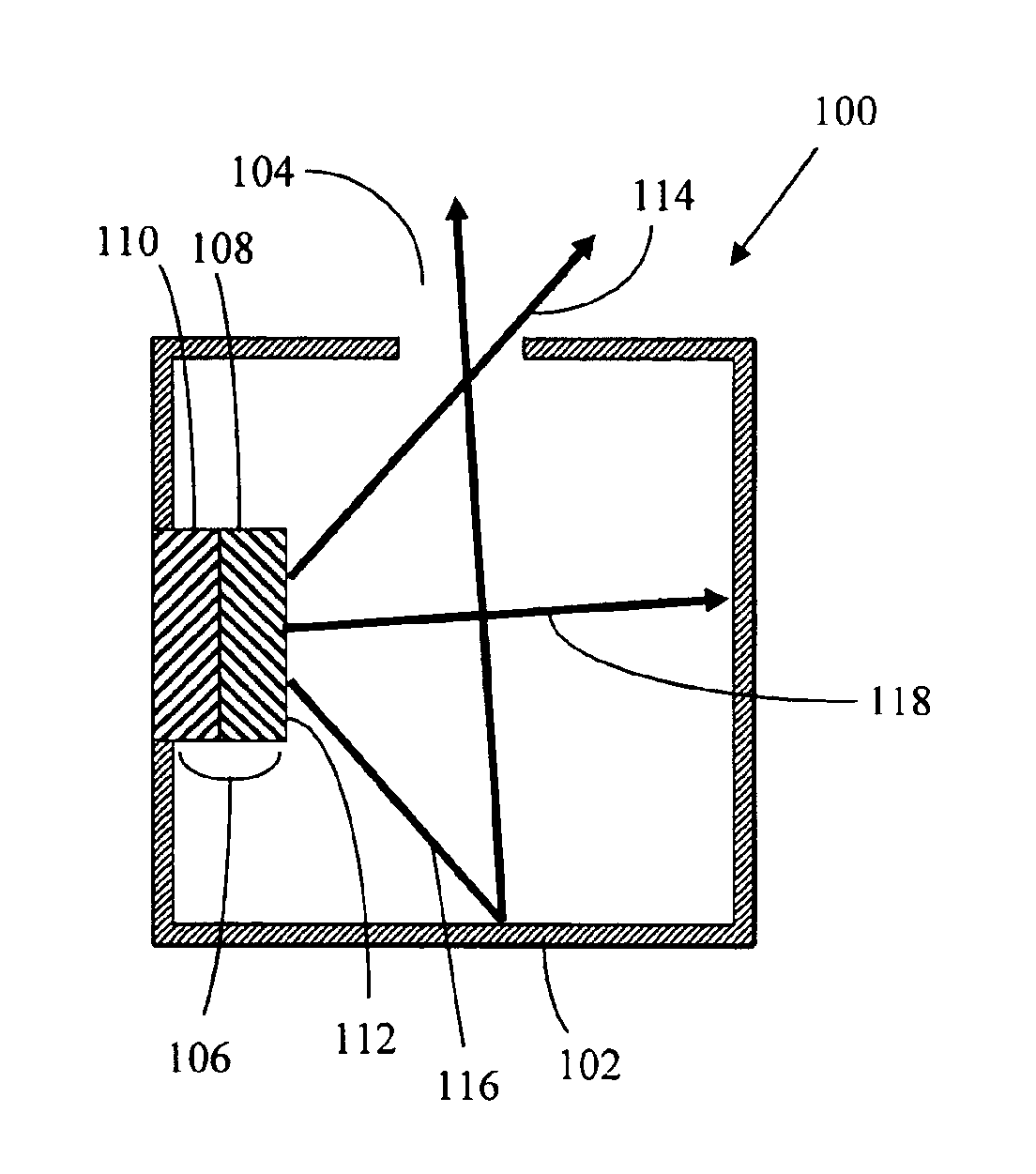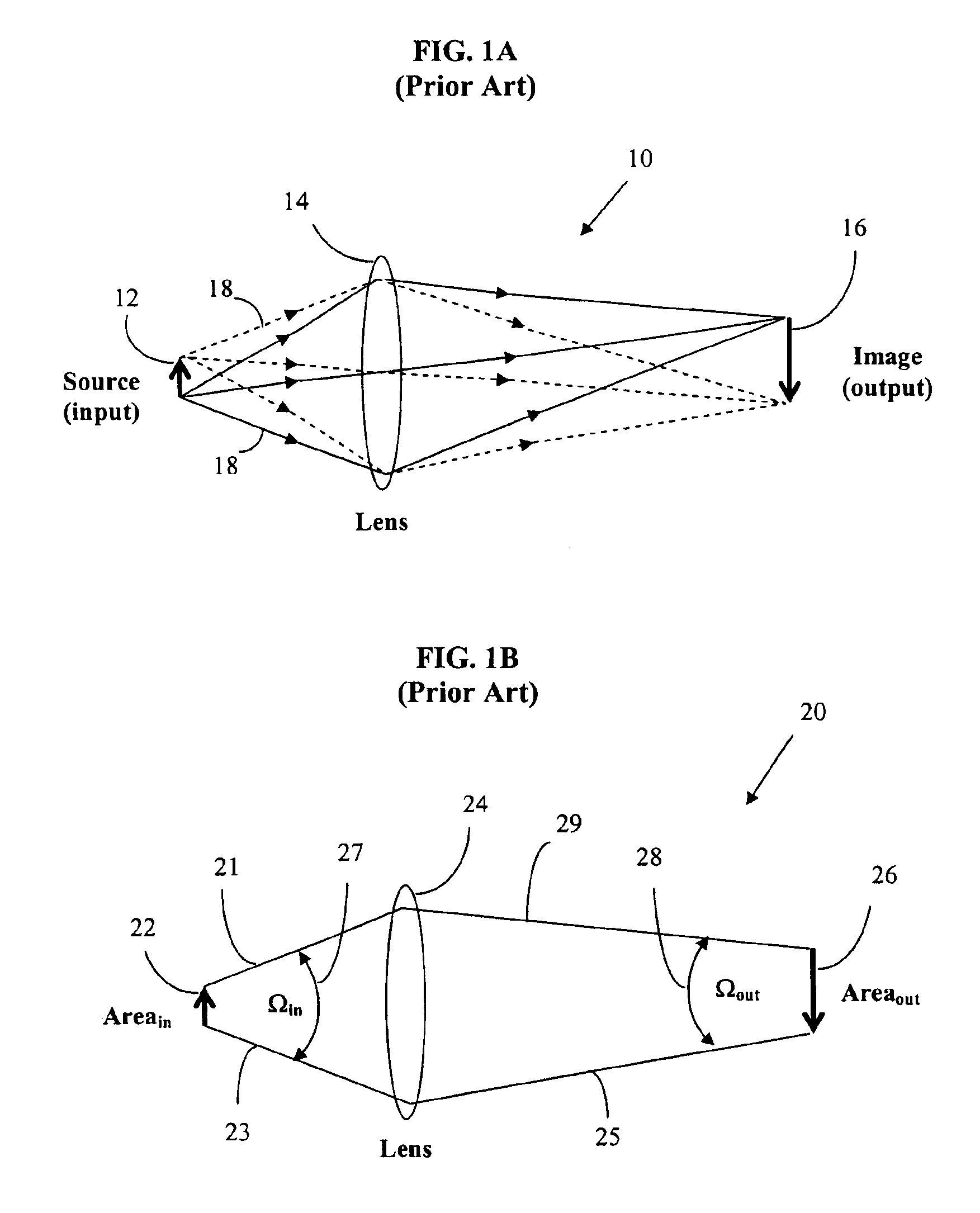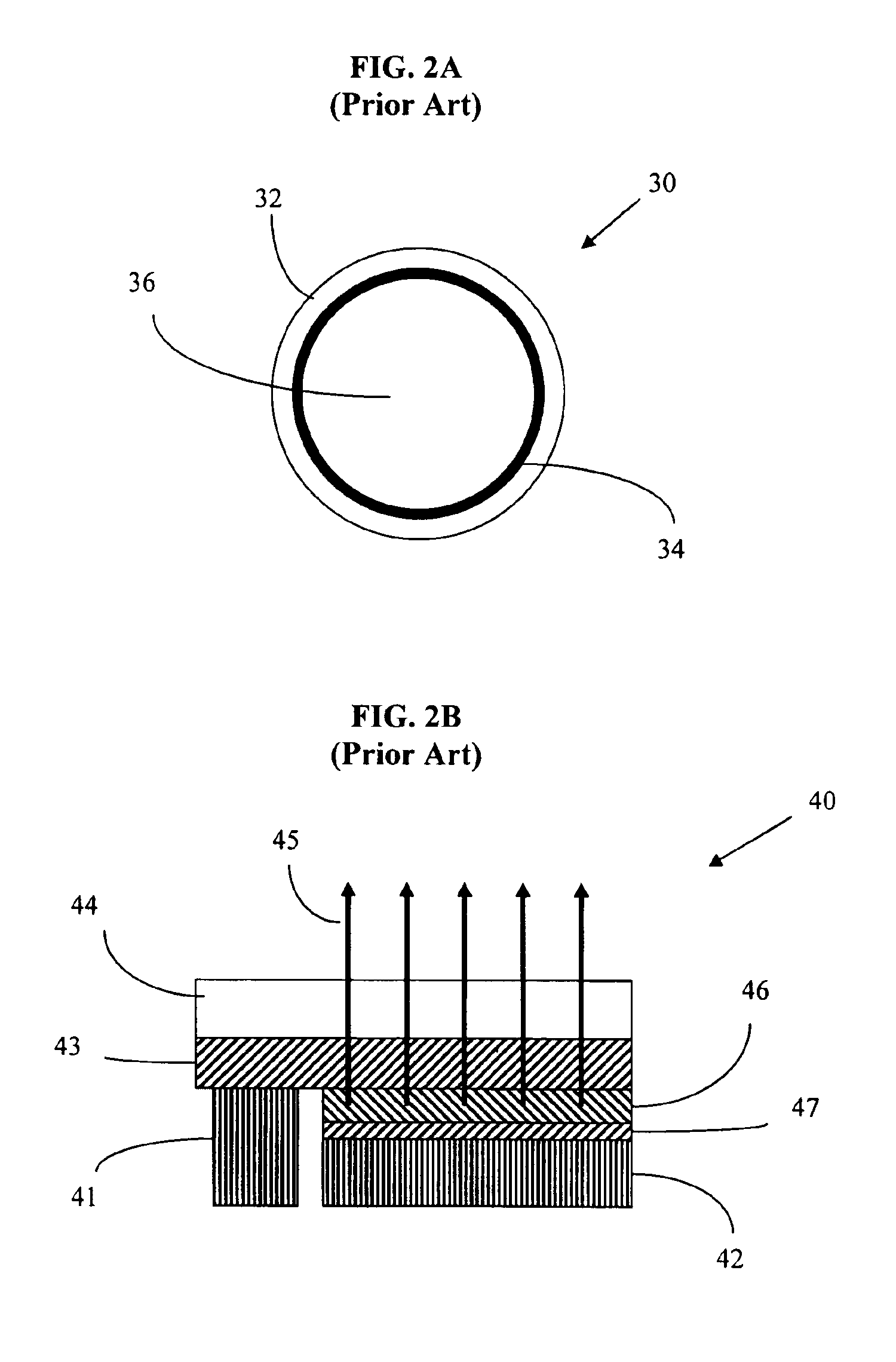Illumination systems utilizing light emitting diodes and light recycling to enhance output radiance
a technology of light-emitting diodes and illumination systems, applied in the direction of instruments, discharge tubes, luminescent screens, etc., can solve the problems of inability to produce an optical output image whose radiance is not known, inconvenient for many applications such as illumination systems, and use of fluorescent lamps as light sources
- Summary
- Abstract
- Description
- Claims
- Application Information
AI Technical Summary
Benefits of technology
Problems solved by technology
Method used
Image
Examples
example 1
[0152]A computer simulation program is used to model the relative output radiance, the relative output luminance and the overall output efficiency of an illumination system that has a light source comprised of twelve identical LEDs inside a light-recycling envelope. Each LED has dimensions of 2 mm×2 mm, a total light-emitting area of 4 mm2 and emits 0.2 watts or 11 lumens of light at 450 nm. The value of 11 lumens is calculated from the value in watts assuming a conversion factor of 55 lumens per watt at 450 nm. Each LED has a maximum intrinsic radiance, Radiance1. The maximum intrinsic radiance of an LED is determined by measuring an identically constructed LED that is not enclosed in a light-recycling envelope and that is not reflecting light from any of the other LEDs. Since all the LEDs are equivalent, the maximum intrinsic radiance of one LED is equal to the maximum intrinsic radiance of the light source. Each LED is assumed to have a Lambertian output light distribution. The t...
example 2
[0155]The illumination system in EXAMPLE 2 is identical to EXAMPLE 1 except that the diffuse reflectivity RE of the inside surfaces of the light-recycling envelope is held constant at 98% and the specular reflectivity RS of the LEDs is varied from 5% to 98%. In this example, a computer simulation program is used to calculate the relative output radiance and the overall output efficiency of an illumination system that has a light source comprised of twelve identical LEDs inside a light-recycling envelope. The dimensions of the light-recycling envelope are listed in EXAMPLE 1. Each LED has a maximum intrinsic radiance, Radiance1, which is equal to the maximum intrinsic radiance the light source. The maximum intrinsic radiance is determined as in EXAMPLE 1. The light output aperture of the light-recycling envelope has an area AO of 4.8 mm2 so that AO / AS equals 0.10, i.e. the area of the light output aperture is 10% of the total area of the LEDs. The ratio, RadianceO / RadianceI, of the o...
PUM
 Login to View More
Login to View More Abstract
Description
Claims
Application Information
 Login to View More
Login to View More - R&D
- Intellectual Property
- Life Sciences
- Materials
- Tech Scout
- Unparalleled Data Quality
- Higher Quality Content
- 60% Fewer Hallucinations
Browse by: Latest US Patents, China's latest patents, Technical Efficacy Thesaurus, Application Domain, Technology Topic, Popular Technical Reports.
© 2025 PatSnap. All rights reserved.Legal|Privacy policy|Modern Slavery Act Transparency Statement|Sitemap|About US| Contact US: help@patsnap.com



